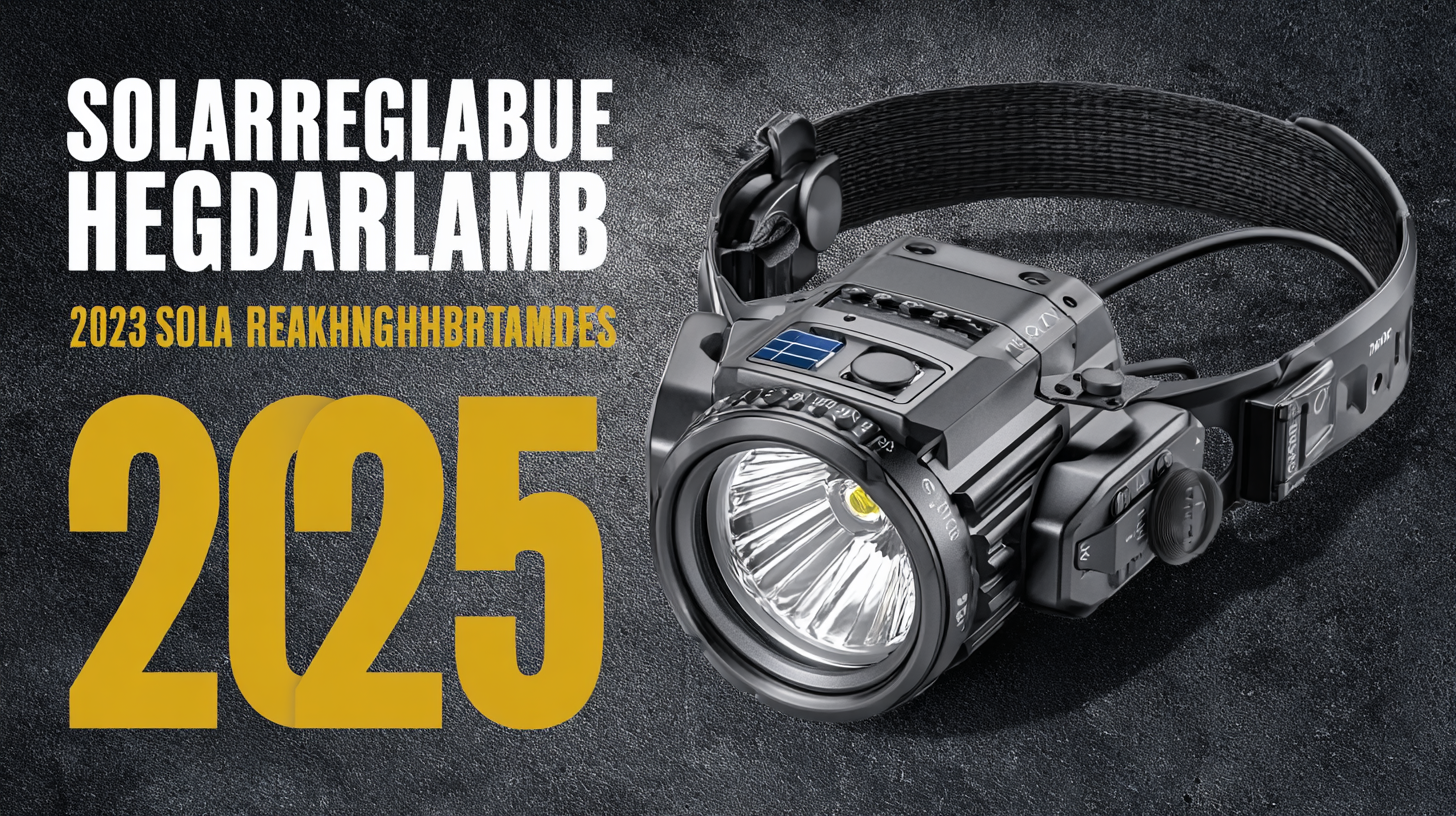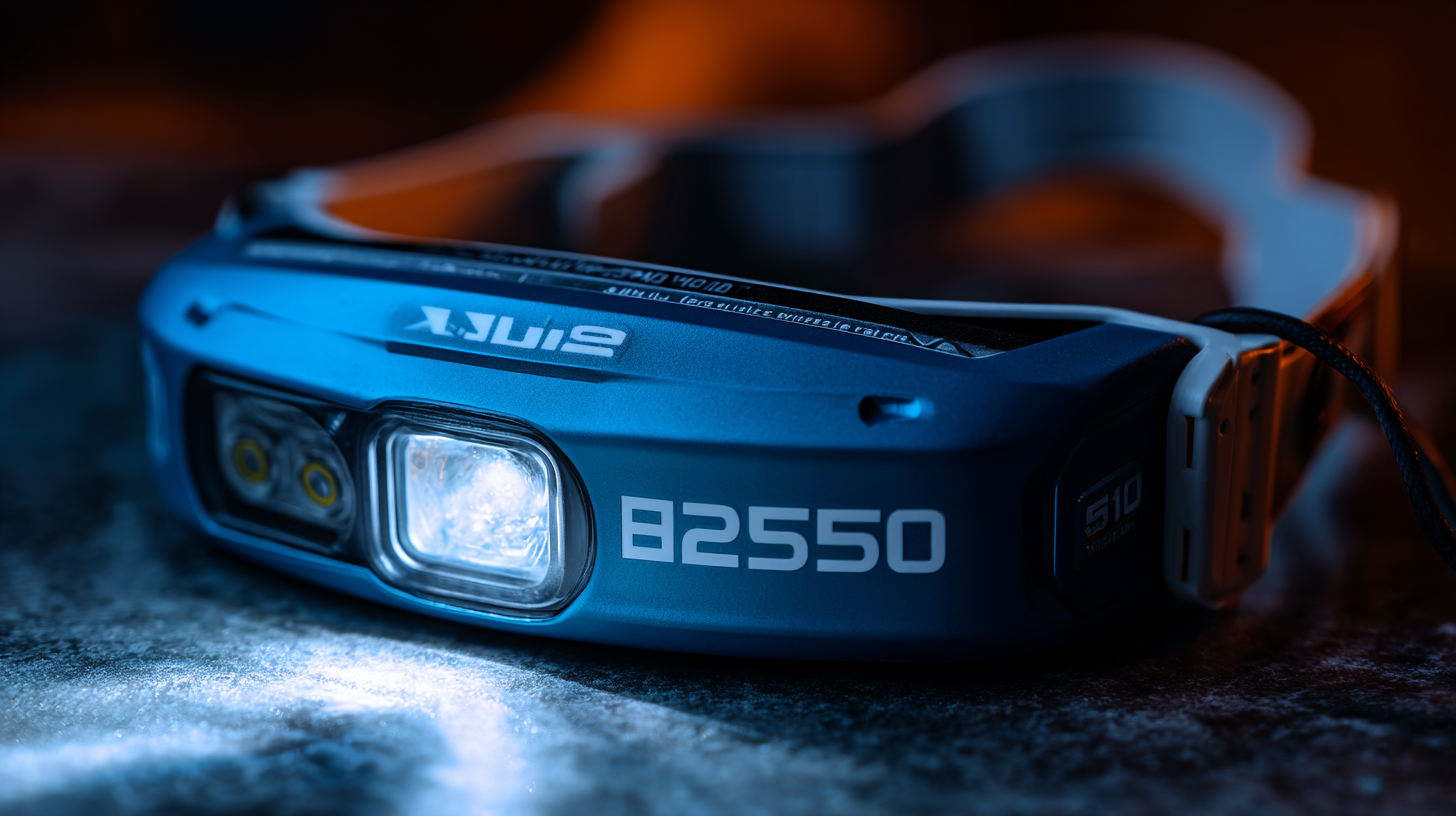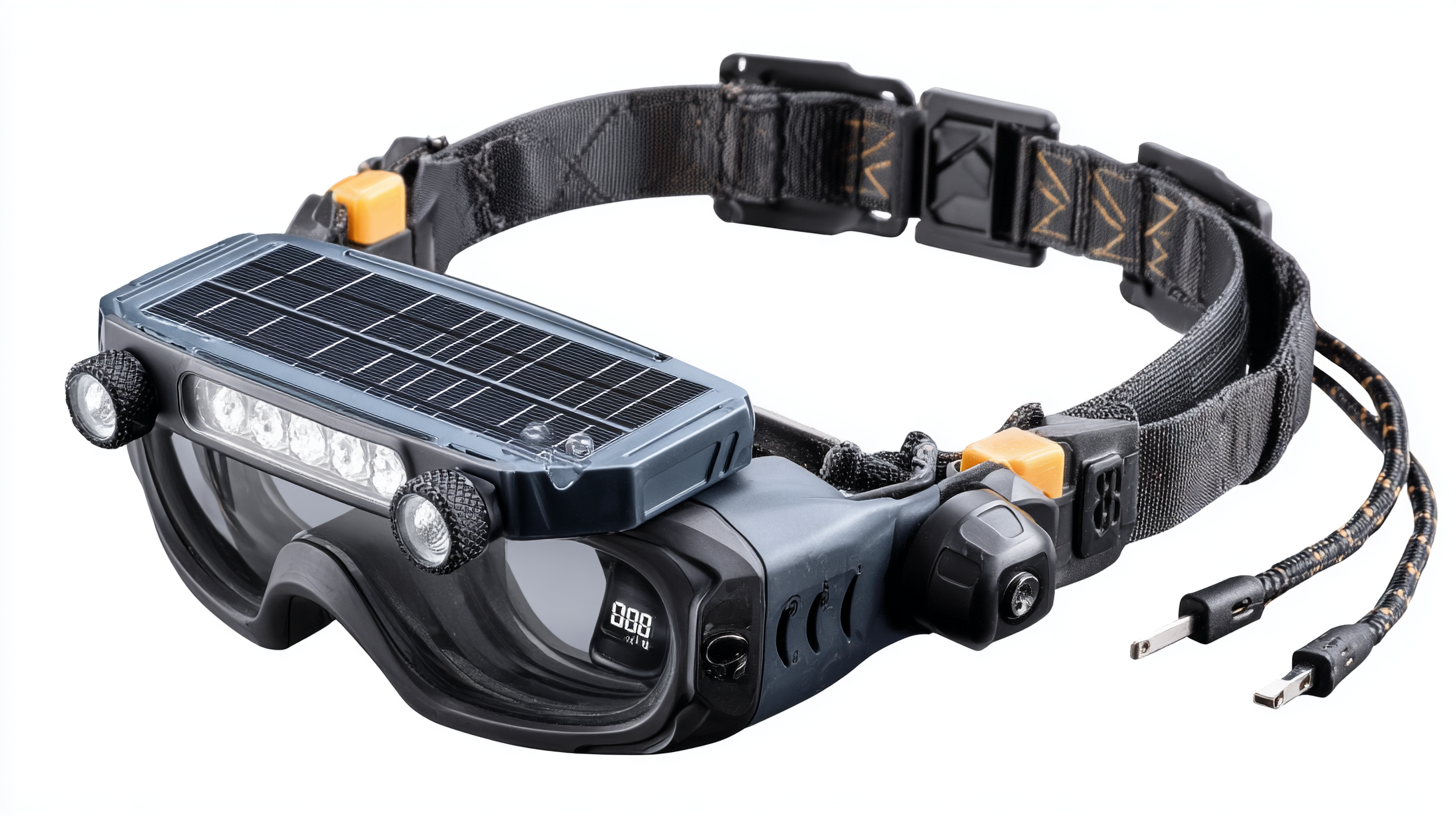2025 Market Insights: 5 Key Trends Driving Demand for Best Solar Rechargeable Headlamps
As we move towards 2025, the demand for innovative and sustainable outdoor gear is rapidly growing, with the solar rechargeable headlamp emerging as a key player in this evolution. According to a recent report by Grand View Research, the global headlamp market is projected to reach $1.48 billion by 2025, fueled by increased interest in eco-friendly products and the outdoor recreation sector's expansion. Solar rechargeable headlamps, which harness renewable energy for illumination, are not only appealing to environmentally conscious consumers but also offer enhanced convenience and efficiency.

In this blog, we will explore five pivotal trends that are driving the demand for these advanced headlamps, highlighting their role in sustainable living and outdoor activities, and underscoring why they have become a must-have tool for adventurers and everyday use alike.
Understanding the Importance of Quality Manufacturers in Solar Rechargeable Headlamps
The solar rechargeable headlamp market is evolving rapidly, driven by the increasing demand for sustainable options in outdoor gear. As consumers become more environmentally conscious, the quality of manufacturers in this sector plays a crucial role. High-quality manufacturers ensure that headlamps are not only efficient in harnessing solar energy but also durable and reliable for various conditions. By investing in superior materials and sustainable practices, these manufacturers help set the standard for performance and longevity, which are vital for demanding outdoor activities.

Furthermore, the reputation of manufacturers significantly impacts consumer trust and market growth. When consumers can identify brands known for their quality, they are more likely to invest in solar rechargeable headlamps that promise exceptional performance. This reliance on trusted manufacturers fosters a competitive market environment, encouraging innovation and driving advancements in battery technology, brightness levels, and design features. Therefore, the emphasis on quality manufacturing is essential, not only for meeting current consumer demands but also for pushing the industry toward a more eco-friendly future.
Identifying Key Features to Assess Manufacturer Credibility
 When selecting a solar rechargeable headlamp, assessing the credibility of the manufacturer is crucial for ensuring quality and performance. Start by researching the brand's history and reputation in the market. Look for reviews from previous buyers and industry experts to gain insights into their product reliability and customer service. Engaging with user communities or forums can provide additional perspectives that can aid in making an informed decision.
When selecting a solar rechargeable headlamp, assessing the credibility of the manufacturer is crucial for ensuring quality and performance. Start by researching the brand's history and reputation in the market. Look for reviews from previous buyers and industry experts to gain insights into their product reliability and customer service. Engaging with user communities or forums can provide additional perspectives that can aid in making an informed decision.
Tips for evaluating manufacturer credibility include checking for certifications that demonstrate compliance with industry standards. Certifications such as CE, RoHS, or ISO can indicate that the manufacturer adheres to safety and environmental regulations. Additionally, ensure that the manufacturer offers a warranty or guarantee on their products, which serves as a testament to their confidence in the durability and functionality of their headlamps.
Finally, consider the innovation and technology behind their products. Companies that invest in research and development are more likely to produce advanced, efficient solar headlamps. Look for features such as adjustable brightness levels, lightweight materials, and waterproof designs, which can enhance the overall user experience and performance in various situations.
Evaluating Manufacturing Technologies and Sustainability Practices
As the demand for solar rechargeable headlamps continues to surge, evaluating manufacturing technologies and sustainability practices is crucial. Innovative production methods, such as 3D printing and modular design, are gaining traction in the industry. These approaches not only minimize waste but also allow for greater customization and efficiency in the manufacturing process. By integrating sustainable materials, companies can further reduce their environmental footprint, aligning with consumer preferences for eco-friendly products.
Tip: When choosing a solar rechargeable headlamp, look for models made from recycled or sustainable materials to support environmentally conscious manufacturing practices.
Moreover, sustainability doesn't stop at production; it extends to the entire product lifecycle. Companies are exploring circular economy principles, emphasizing repairability and recyclability. This shift is essential for ensuring that products do not contribute to landfill waste at the end of their life span.
Tip: Consider purchasing headlamps from brands that offer take-back programs or recycling initiatives, ensuring that your investment is part of a sustainable ecosystem.
By focusing on these advancements and practices, we can drive not only the market forward but also contribute to a greener planet.
2025 Market Insights: 5 Key Trends Driving Demand for Best Solar Rechargeable Headlamps
| Trend | Description | Impact on Market | Manufacturing Technology | Sustainability Practice |
|---|---|---|---|---|
| Increased Efficiency | Advancements in solar panel technology leading to better energy conversion. | Higher demand due to increased functionality and shorter charging times. | Use of advanced photovoltaic materials. | Recycling of older solar panels to reduce waste. |
| Compact Design | Trend towards lighter and more portable headlamps. | Broader appeal to outdoor enthusiasts and casual users. | Innovative materials such as lightweight polymers. | Sourcing materials from sustainable suppliers. |
| Smart Features | Incorporation of Bluetooth connectivity and smart sensors. | Attracting tech-savvy consumers and enhancing user experience. | Integration of smart technology into headlamp designs. | Energy-efficient smart technology minimizes power consumption. |
| Diverse Applications | Use in various sectors such as camping, mining, and emergency services. | Driving growth across different markets and industries. | Custom manufacturing processes tailored to specific applications. | Implementing lifecycle assessments to optimize usage. |
| Eco-Friendly Materials | Shift towards biodegradable and recyclable materials in product design. | Attracting environmentally-conscious consumers. | Utilization of sustainable composites for headlamp shells. | Emphasis on reducing carbon footprint in production. |
Researching Customer Feedback and Industry Reputation
In the rapidly evolving market for solar rechargeable headlamps, understanding customer feedback is paramount. A recent study revealed that 79% of consumers trust online reviews as much as personal recommendations, highlighting the importance of leveraging customer insights for product development.
Analysis using natural language processing (NLP) techniques has shown that reviews not only shed light on product performance but also reveal latent consumer needs that manufacturers may overlook. This makes harnessing customer feedback through industry reputation crucial for brands looking to lead in the solar headlamp segment.
Additionally, organizations are using AI to refine their Key Performance Indicators (KPIs), focusing on undervalued aspects of consumer sentiment. By analyzing online reviews, brands can identify trends in customer preferences, such as shifts towards sustainability or user experience improvements.
With data indicating that 67% of consumers prefer sustainable products, brands can attune their offerings to these preferences by leveraging customer-driven insights to enhance their market positions amidst growing competition.
Exploring Certifications and Compliance Standards for Reliable Products
When considering the purchase of solar rechargeable headlamps, it is essential to focus on the certifications and compliance standards that ensure product reliability. As consumers increasingly prioritize sustainability, the presence of verified certifications can significantly influence purchasing decisions. Standards such as UL, CE, and FCC not only affirm that the headlamps are safe for use but also highlight that they comply with environmental regulations. This is particularly important for solar products, as they should meet stringent guidelines related to energy efficiency and material safety.
Additionally, exploring third-party testing and certifications gives consumers peace of mind. Brands that actively seek out independent validation demonstrate a commitment to quality and transparency. Look for headlamps that are certified for their lumen output, battery life, and solar efficiency. This kind of scrutiny not only provides confidence in the durability and performance of the product but also promotes responsible consumer choices that align with environmentally friendly practices. As the demand for solar rechargeable headlamps grows, understanding these compliance standards will empower consumers to make informed decisions that benefit both their outdoor adventures and sustainability efforts.
